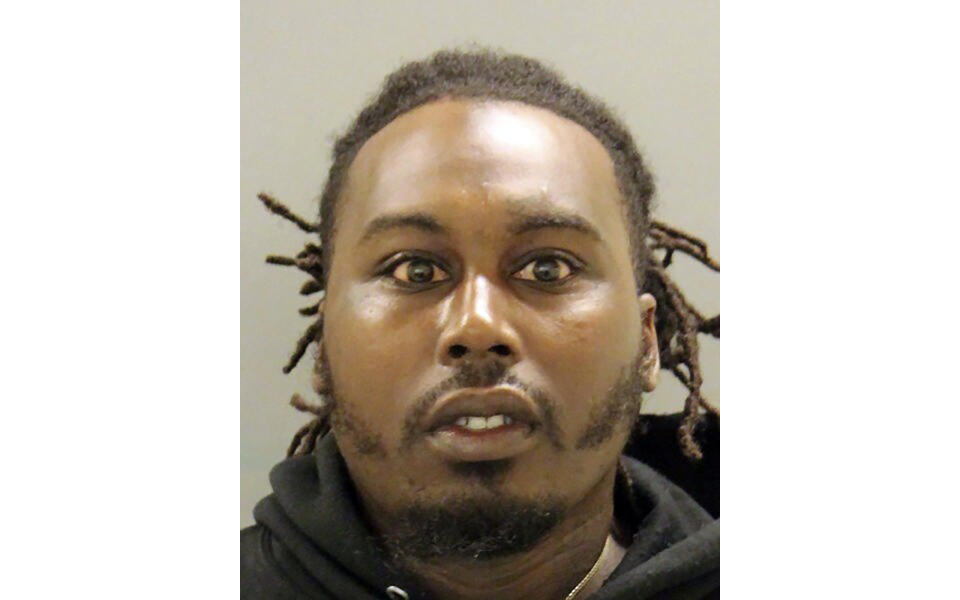Defense lawyers ask judge to rule in their favor in lawsuit involving fatal police shooting
PHILADELPHIA (AP) — Attorneys for Delaware’s largest county and three police officers asked a federal judge on Tuesday to rule in their favor in a lawsuit stemming from a fatal police shooting in 2021.
The family of Lymond Moses is suing New Castle County and officers Roberto Ieradi, Robert Ellis and Sean Sweeney-Jones for wrongful death and excessive force. They also allege that the officers acted recklessly and violated Moses’ constitutional rights. The lawsuit also claims the county failed to train police properly and that its policies and practices resulted in Moses’ death.
Defense atttorneys argue that the undisputed facts show that the officers were justified in using deadly force, and that Moses’ own actions caused his death. A report commissioned by the Delaware attorney general’s office concluded that the officers were justified in using deadly force.
“Mr. Moses made a whole lot of bad decisions that night,” attorney David MacMain, representing the county, told Judge L. Felipe Restrepo during a hearing on the defendants’ motion to rule in their favor without a trial.
Attorney Emeka Igwe, representing Moses’ family, claims he was “murdered” by “rogue officers.” Igwe argued that a jury should decide whether the officers and the county should be held liable. He also rejected the notion that Ieradi, who fired the shot that killed Moses and has since left the police force, was acting in self-defense and feared for his life and the lives of fellow officers.
“This was simply an execution, because he was upset that Mr. Moses had the audacity to drive away from him,” Igwe said.
Restrepo will consider additional written arguments from attorneys before deciding whether to grant summary judgment to the defendants.
Moses, 30, was shot shortly after 1 a.m. on Jan. 13, 2021, after being confronted by the three county officers, who were patrolling in a Wilmington neighborhood where several stolen vehicles had been found.
Footage from the officers’ body cameras shows Moses unconscious in the driver’s seat of a rental car, which was parked with the transmission engaged, engine running and dome light on. Moses wakes up after an officer reaches through the open driver’s side window and turns off the ignition with his baton. Moses then rolls up the window, and the officer opens the door.
“My mom live right here! Why you waking up like ... ?” Moses says in a loud, agitated voice.
The officers tell Moses they are looking for stolen cars and point out that marijuana is clearly visible in his car. They then tell Moses to “hop out,” but he doesn’t comply. Instead, Moses starts the engine and speeds away, leading to a brief vehicle pursuit that ends when he drives down a dead end street. Moses turns his vehicle around facing in the direction of the officers.
“Don’t f------ do it! Don’t do it!” Ieradi shouts before Moses accelerates in his direction.
Ieradi opens fire as Moses’ car begins angling to his left and continues firing as the car passes him. Sweeney-Jones, standing to the right of Ieradi, also points his weapon at the car as it begins to accelerate but he does not fire.
Ellis had pulled his vehicle behind the other two police vehicles and took a position behind Ieradi. He began shooting at Moses' car as it crashed into Ieradi’s vehicle while apparently trying to weave between it and the vehicle behind which Ellis was standing.
Data extracted from Moses’ vehicle shows that he floored the accelerator between 2.5 and 3 seconds before the crash, going from a dead stop to 23 mph (37 kph) in three seconds. All the shots fired by the officers occurred in that same time span. MacMain noted that Moses’ car was only three feet (1 meter) from Ieradi when the officer fired his fourth shot, which went through the driver’s window and struck Moses in the head.
“I don’t believe there is any way to view that video and say these officers were not in harm’s say,” said attorney Daniel Griffith, representing the three officers.
Igwe argued that Moses did not pose any imminent threat to the officers and that he “simply wanted to get away.”
Moses, who had a history of drug dealing and probation violation convictions dating to 2012, was wanted for a probation violation at the time of the shooting. He had been arrested on felony drug charges on two separate occasions in the year before and was on probation for drug-dealing at the time.
A toxicology report found that the level of fentanyl in Moses’ system was more than 100 times the lethal amount.
“It’s amazing that he was even alive,” MacMain said.
Igwe suggested that Moses, as a long-time fentanyl user, had developed a “tolerance” for the deadly drug.
“It wasn’t fentanyl that killed him. It was the bullet to the head from Officer Ieradi,” Igwe said.


